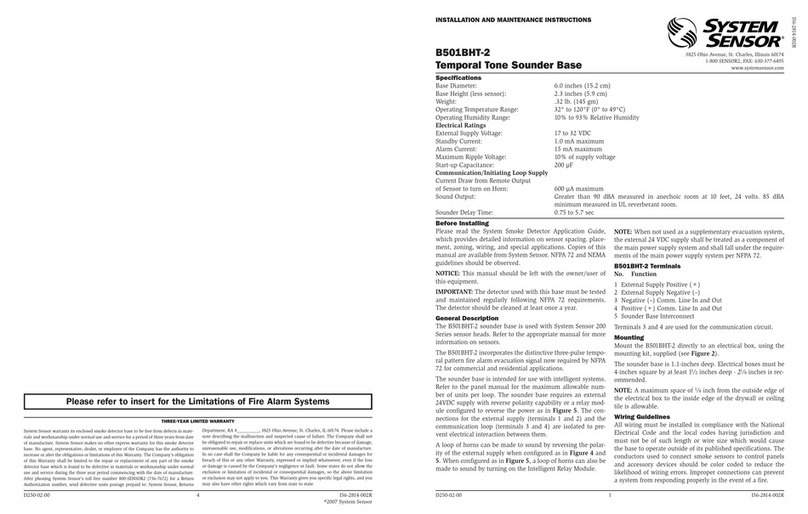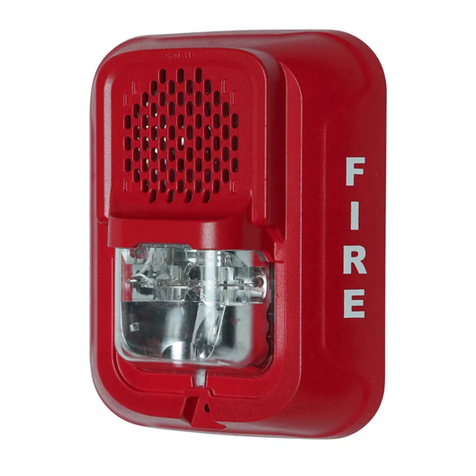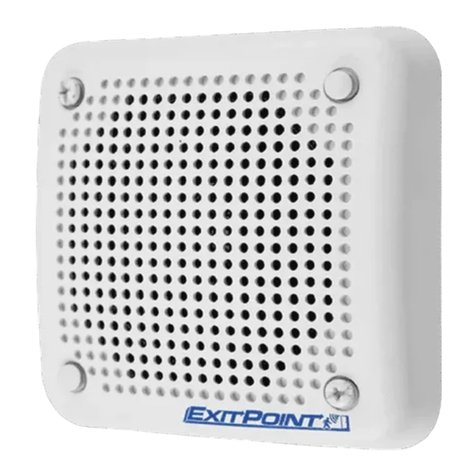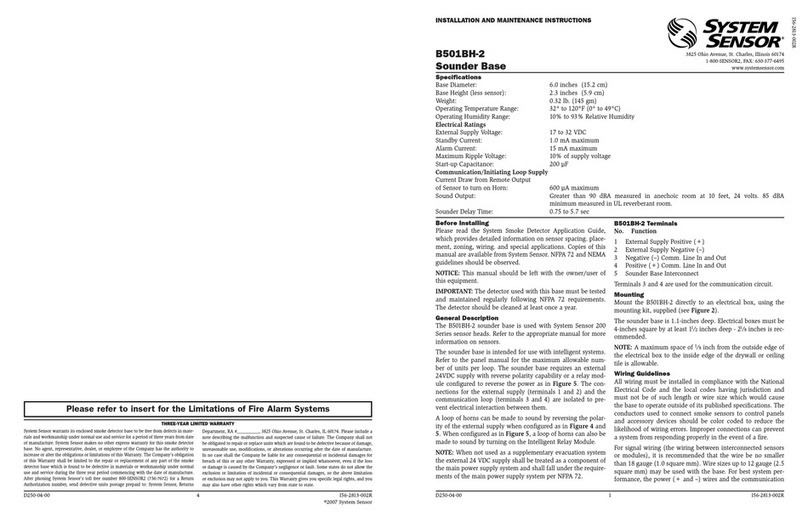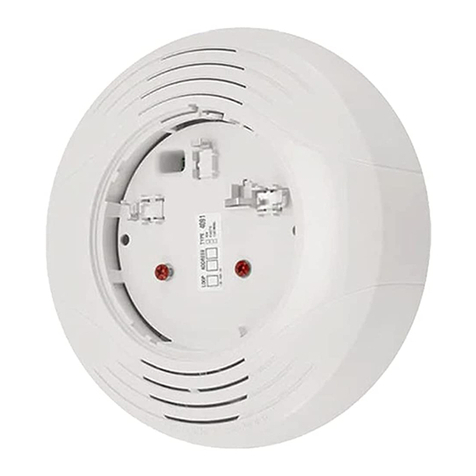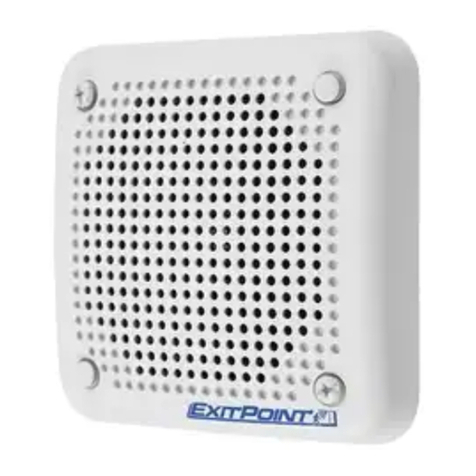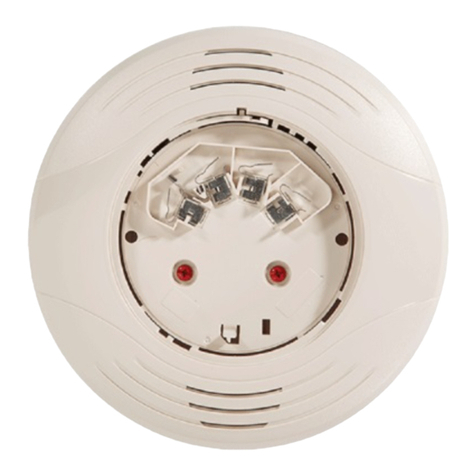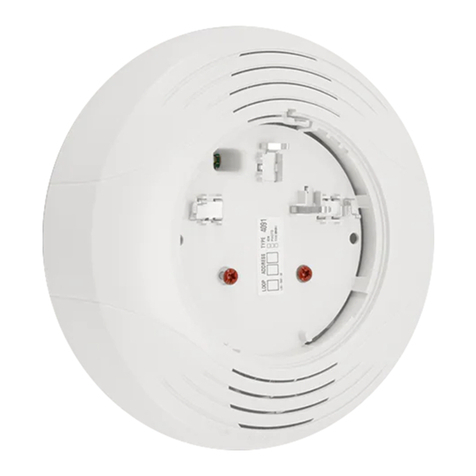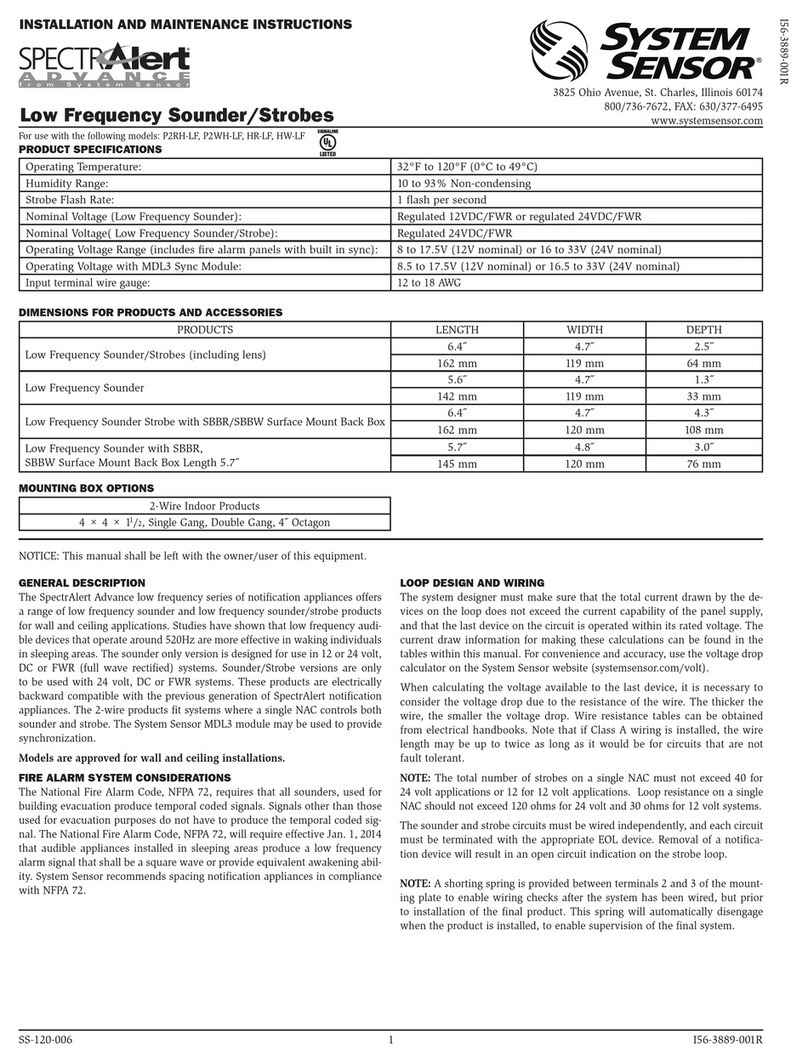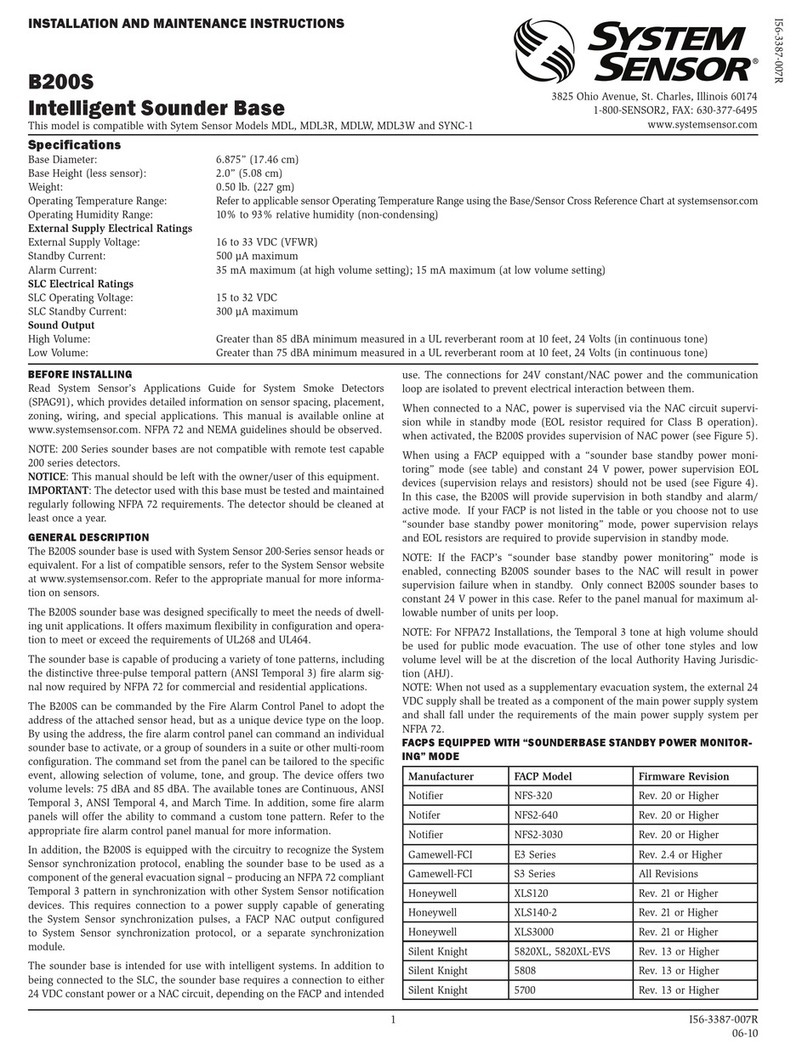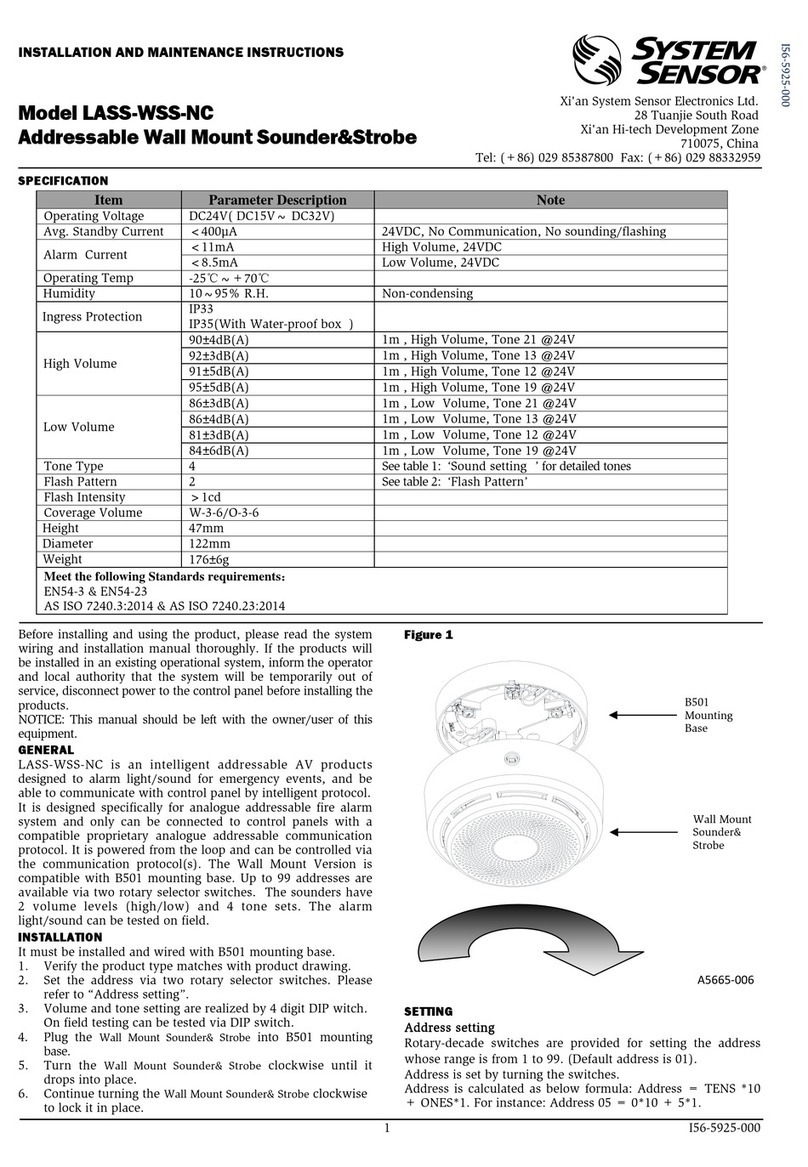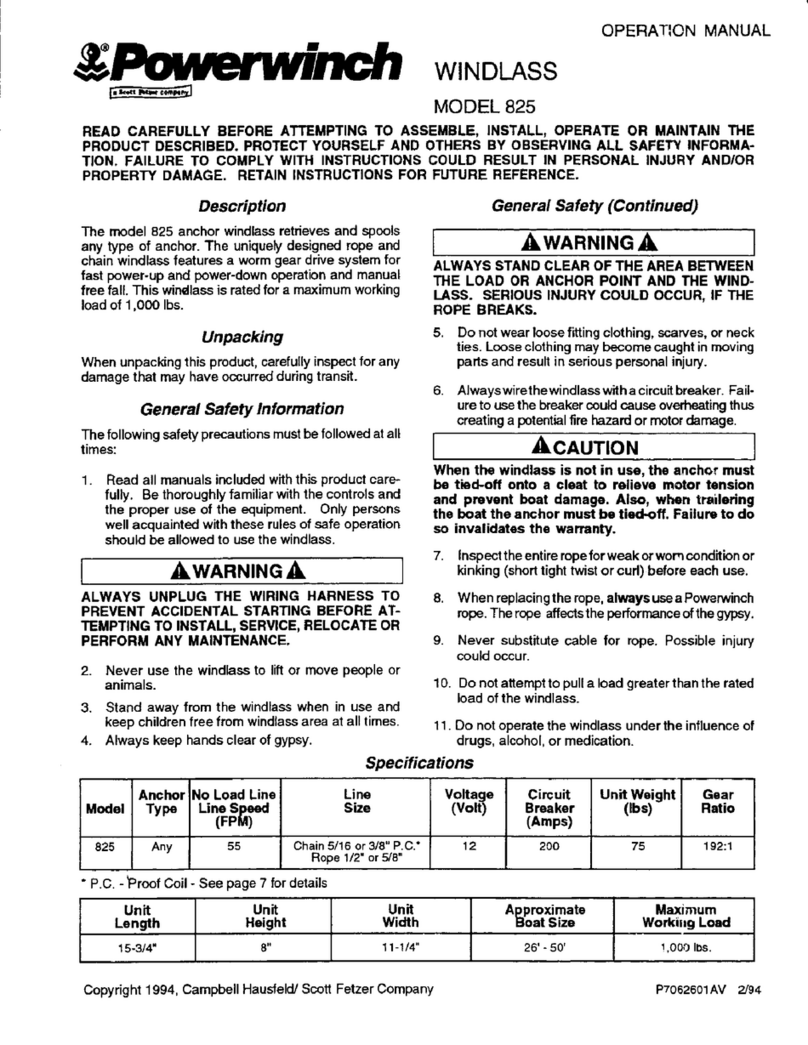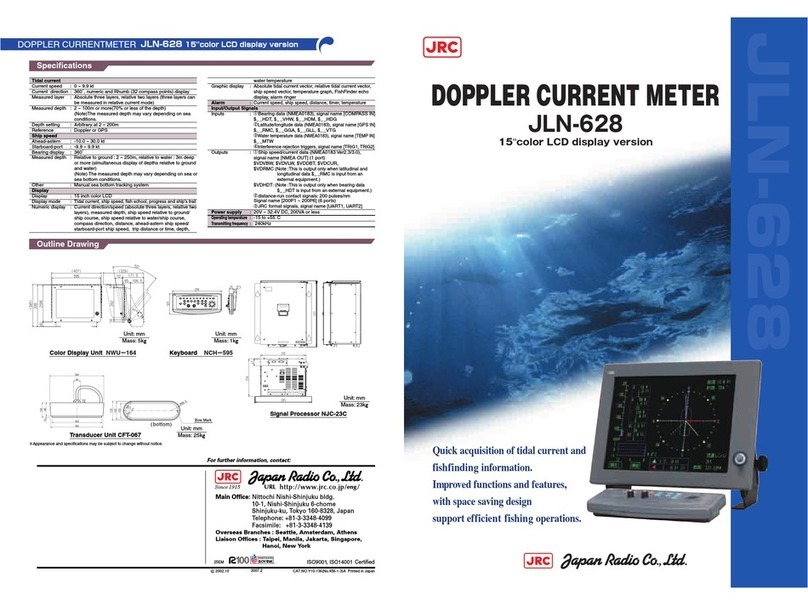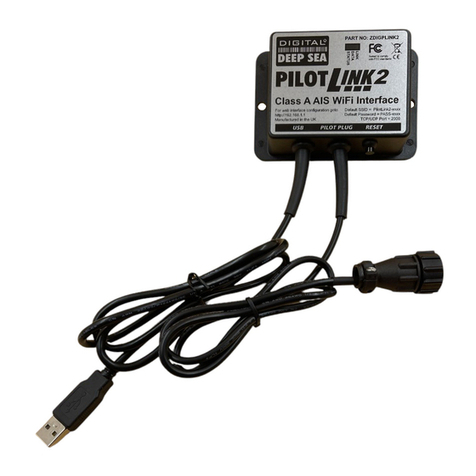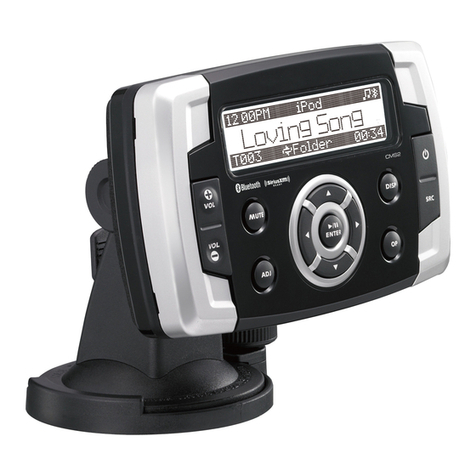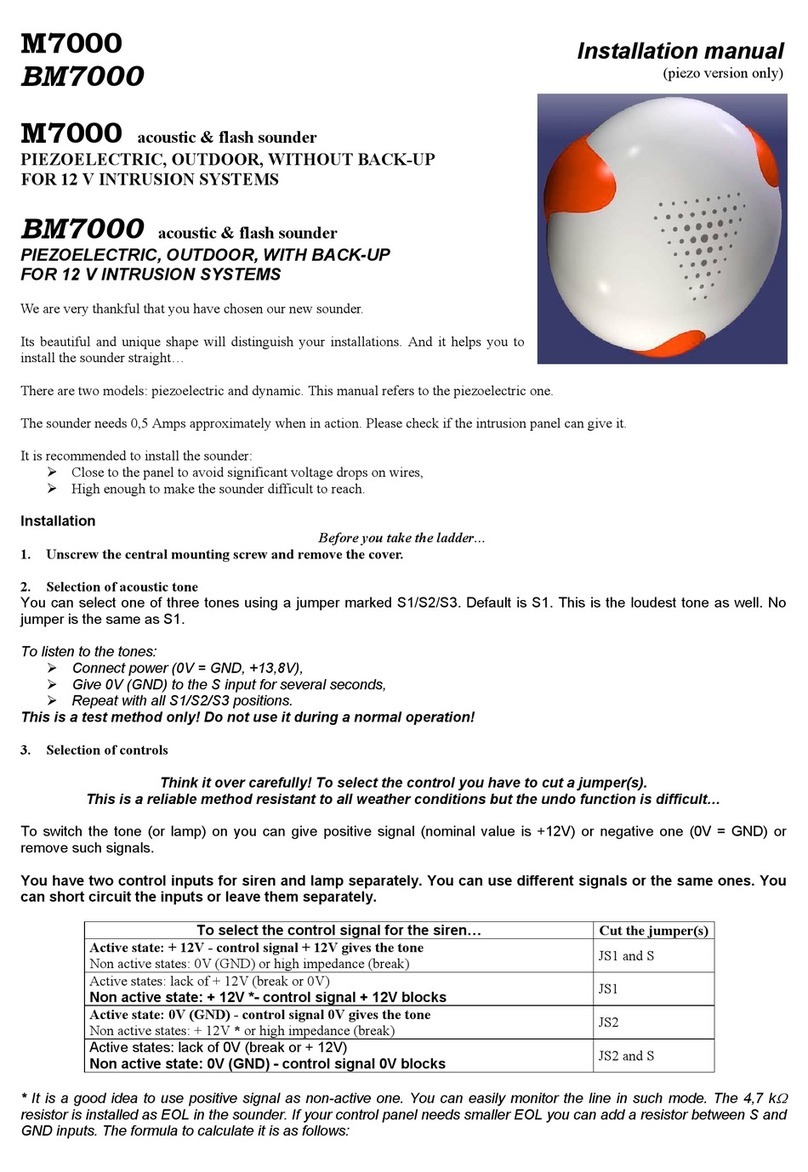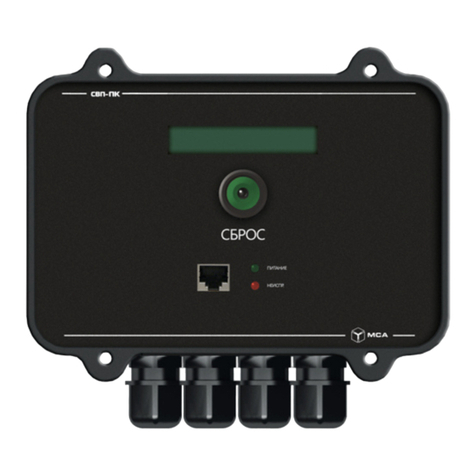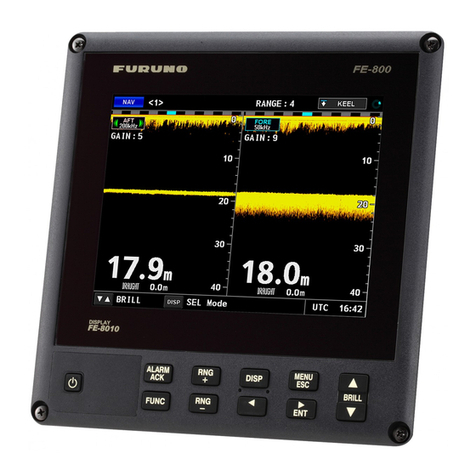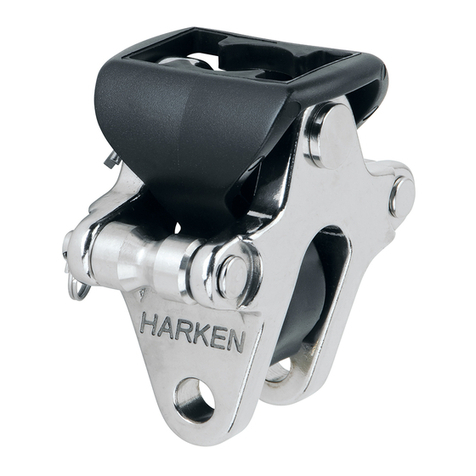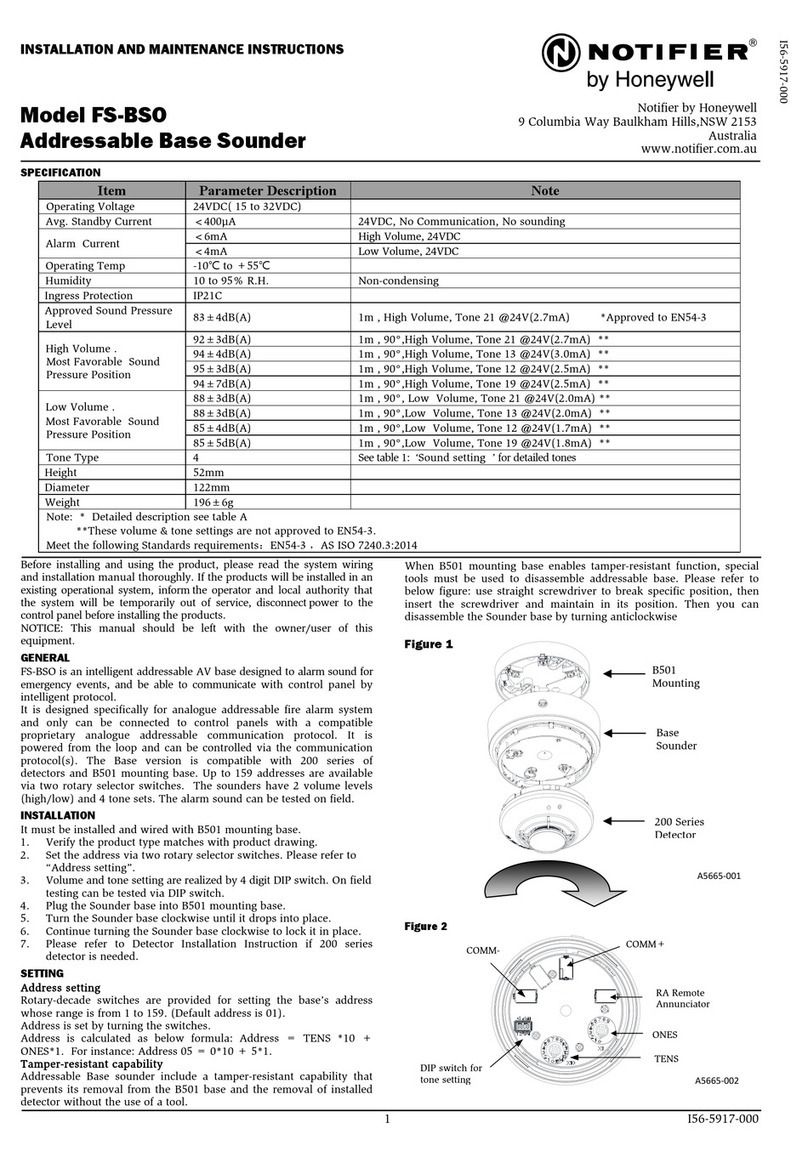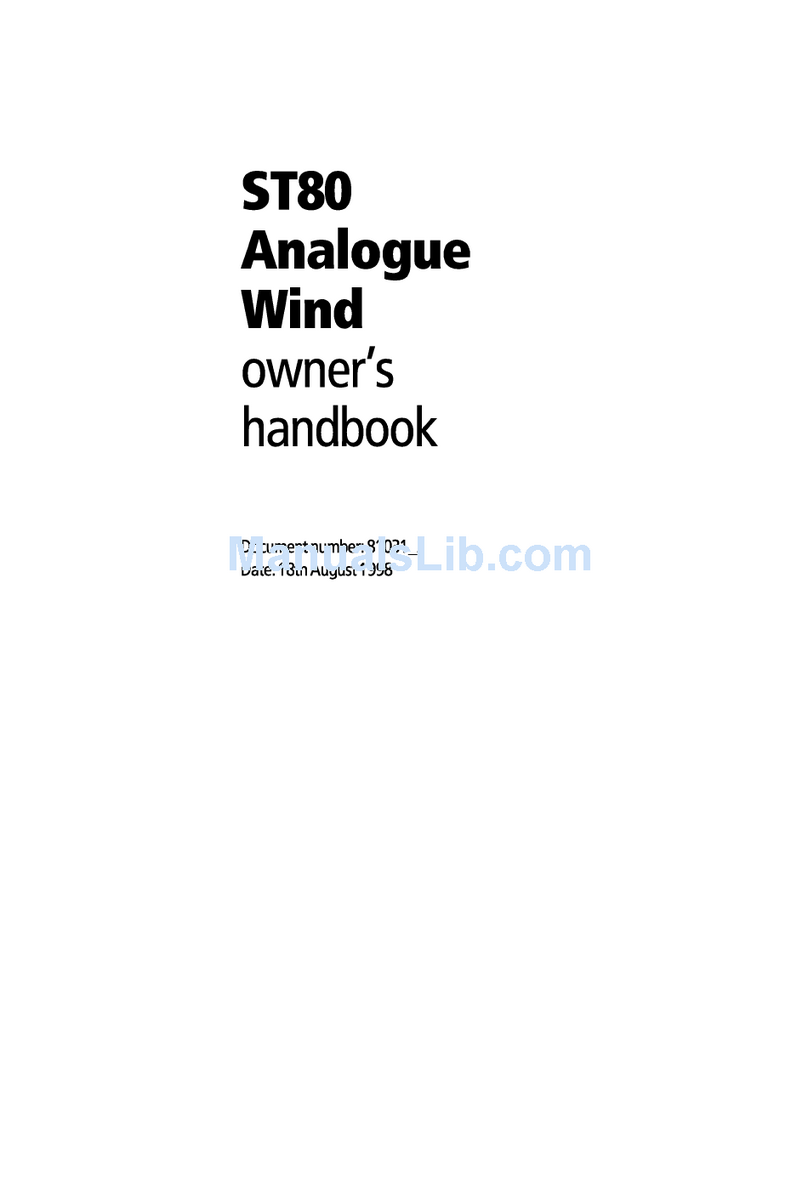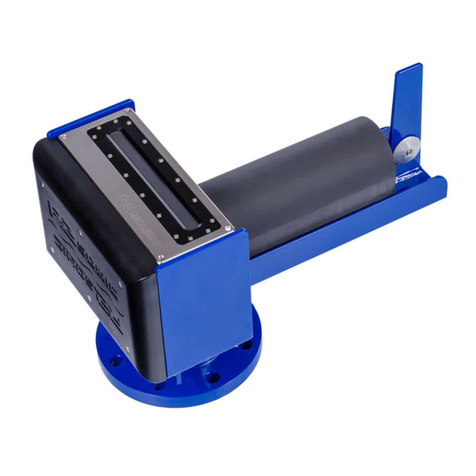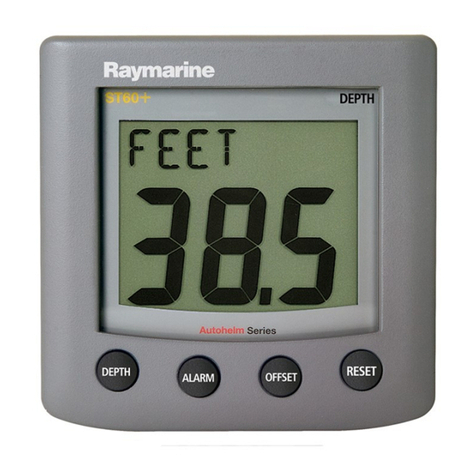
SS-450-000 1 I56-3387-005R
B200S
Intelligent Sounder Base
INSTALLATION AND MAINTENANCE INSTRUCTIONS
3825 Ohio Avenue, St. Charles, Illinois 60174
1-800-SENSOR2, FAX: 630-377-6495
www.systemsensor.com
BEFORE INSTALLING
Please read the System Sensor Smoke Detector Application Guide, which pro-
vides detailed information on sensor spacing, placement, zoning, wiring, and
special applications. Copies of this manual are available from System Sensor.
NFPA 72 and NEMA guidelines should be observed.
NOTE: 200 Series sounder bases are not compatible with remote test capable
200 series detectors.
NOTICE: This manual should be left with the owner/user of this equipment.
IMPORTANT: The detector used with this base must be tested and maintained
regularly following NFPA 72 requirements. The detector should be cleaned at
least once a year.
GENERAL DESCRIPTION
The B200S sounder base is used with System Sensor 200-Series sensor heads or
equivalent. For a list of compatible sensors, refer to the System Sensor website
at www.systemsensor.com. Refer to the appropriate manual for more informa-
tion on sensors.
The B200S sounder base was designed specifically to meet the needs of dwell-
ing unit applications. It offers maximum flexibility in configuration and opera-
tion to meet or exceed the requirements of UL268 and UL464.
The sounder base is capable of producing a variety of tone patterns, including
the distinctive three-pulse temporal pattern (ANSI Temporal 3) fire alarm sig-
nal now required by NFPA 72 for commercial and residential applications.
The B200S can be commanded by the Fire Alarm Control Panel to adopt the
address of the attached sensor head, but as a unique device type on the loop.
By using the address, the fire alarm control panel can command an individual
sounder base to activate, or a group of sounders in a suite or other multi-room
configuration. The command set from the panel can be tailored to the specific
event, allowing selection of volume, tone, and group. The device offers two
volume levels: 75 dBA and 85 dBA. The available tones are Continuous, ANSI
Temporal 3, ANSI Temporal 4, and March Time. In addition, some fire alarm
panels will offer the ability to command a custom tone pattern. Refer to the
appropriate fire alarm control panel manual for more information.
In addition, the B200S is equipped with the circuitry to recognize the System
Sensor synchronization protocol, enabling the sounder base to be used as a
component of the general evacuation signal – producing an NFPA 72 compli-
ant Temporal 3 pattern in synchronization with other System Sensor notifica-
tion devices. This requires connection to a power supply capable of generating
the System Sensor synchronization pulses, a FACP NAC output configured to
System Sensor synchronization protocol, or a separate synchronization mod-
ule. In this scenario, the sounder bases will have the ability to synchronize
with other System Sensor horns, horn/strobes, and chimes using the same
power source.
Specifications
Base Diameter: 6.875” (17.46 cm)
Base Height (less sensor): 2.0” (5.08 cm)
Weight: 0.50 lb. (227 gm)
Operating Temperature Range: Refer to applicable sensor Operating Temperature Range using the Base/Sensor Cross Reference Chart at systemsensor.com
Operating Humidity Range: 10% to 93% relative humidity (non-condensing)
External Supply Electrical Ratings
External Supply Voltage: 16 to 33 VDC (VFWR)
Standby Current: 500 μA maximum
Alarm Current: 35 mA maximum (at high volume setting)
15 mA maximum (at low volume setting)
SLC Electrical Ratings
SLC Operating Voltage: 15 to 32 VDC
SLC Standby Current: 300 μA maximum
Sound Output
High Volume: Greater than 85 dBA minimum measured in a UL reverberant room at 10 feet, 24 Volts (in continuous tone)
Low Volume: Greater than 75 dBA minimum measured in a UL reverberant room at 10 feet, 24 Volts (in continuous tone)
The sounder base is intended for use with intelligent systems. The sounder
base requires an external 24 VDC power supply. The connections for the
external power supply and the communication loop are isolated to prevent
electrical interaction between them. Refer to the panel manual for maximum
allowable number of units per loop.
NOTE: For NFPA72 Installations, the Temporal 3 tone at high volume should
be used for public mode evacuation. The use of other tone styles and low
volume level will be at the discretion of the local Authority Having Jurisdic-
tion (AHJ).
NOTE: When not used as a supplementary evacuation system, the external 24
VDC supply shall be treated as a component of the main power supply system
and shall fall under the requirements of the main power supply system per
NFPA 72.
WIRING GUIDELINES
All wiring must be installed in compliance with the National Electrical Code
and the local codes having jurisdiction and must not be of such length or wire
size which would cause the base to operate outside of its published specifica-
tions. The conductors used to connect smoke sensors to control panels and
accessory devices should be color coded to reduce the likelihood of wiring
errors. Improper connections can prevent a system from responding properly
in the event of a fire.
Wire sizes up to 12 AWG (2.5 mm2) may be used with the base. The sounder
base will be shipped with the screw terminals set for 14 AWG wiring. If 12
AWG wire is to be used, back out the screws to allow the wire to fit beneath
the clamping plates.For best system performance, the power (+ and -) wires
and the communication circuit wires should be twisted pair or shielded cable
installed in a separate grounded conduit to protect the communication loop
from electrical interference.
I56-3387-005R
This model is compatible with Sytem Sensor Models MDL, MDL3R, MDLW, MDL3W and SYNC-1
